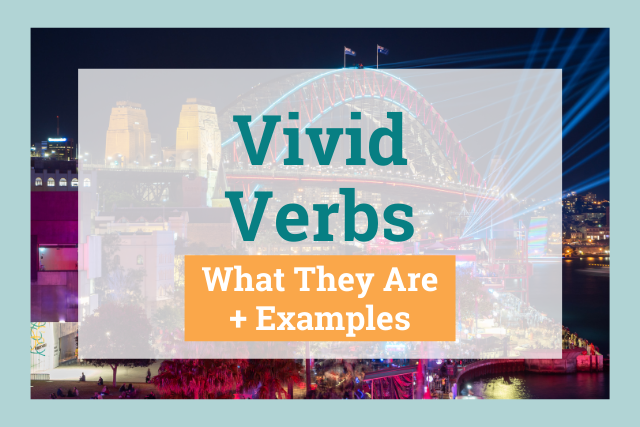
Bland verbs make for mundane stories. Some might be permissible or even necessary, but too many boring verbs pull the life out of even the liveliest writing.
So, what are some ways to use more vivid verbs? Let’s discuss.
Vivid Verbs: Definition
The New Oxford Dictionary defines vivid as “producing powerful feelings or strong, clear images in the mind.”
The key word is “clear.” We want to strive for clarity with our verbs.
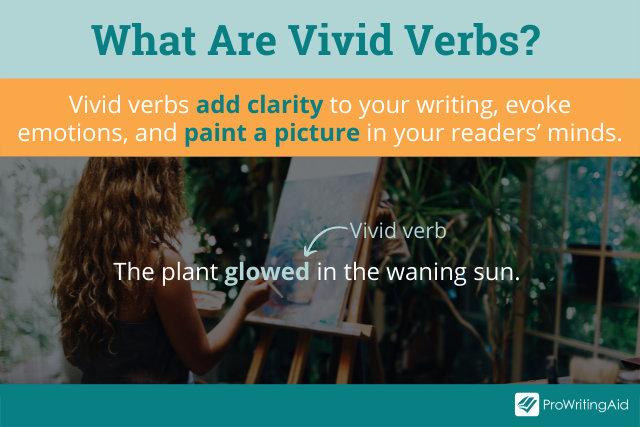
Take the verb “fall” as an example. There’s nothing wrong with the word; most people know what it means.
However, it could certainly be clearer. A fall just means downward motion; it suggests nothing about intention or distance.
Say we swap “fall” with a vivid verb like “tumble.” It’s more vivid because it implies a clumsy roll, or perhaps even an accidental fall.
Or we could use “plummet,” which paints of vivid picture of someone falling from a huge distance, likely to their doom.
Or what about “descend?” That feels much more gradual and intentional, like an airplane landing.
See how much more meaning we can get from verbs? That’s what we mean by “vivid.”
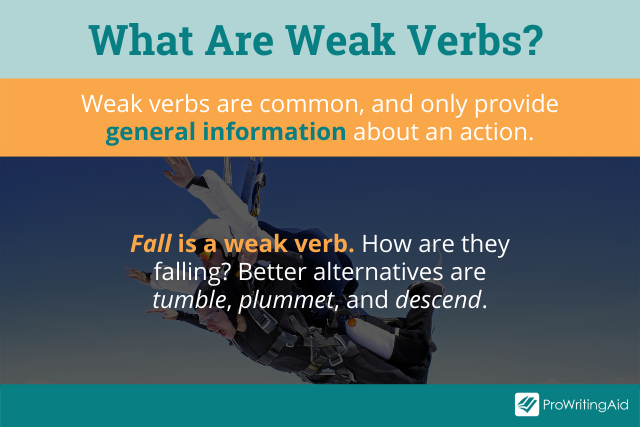
Vivid Verbs: Meaning
In creative writing, verbs are crucial. Action verbs are the best words for creating a picture in your readers’ minds.
Of course, adjectives and adverbs are great, but vivid verbs have motion attached to them.
UsingF vivid verbs means choosing a strong verb to paint a picture, adding clarity and specificity. Weak verbs don’t evoke the same images as vivid verbs.
How do you determine whether a verb is strong or weak?
Common verbs like walk or run are usually weak. Instead of describing how someone walks with an adjective (e.g. walks slowly), a strong verb can provide more information about the character and the scene.
Both meanders and shuffles are synonyms for walks slowly, but these vivid verbs each evoke a different mood.
Meanders denotes a lazy pace, usually with peace. Shuffles implies that the character is feeling an emotion like sadness or embarrassment.
How to Use Vivid Verbs in Sentences
Let’s examine Strunk and White’s famous advice from The Elements of Style: “Omit needless words.”
This advice is especially useful for verbs, because we often use multiple words when we could use one. Take this sentence as an example:
- The dog jumped over the obstacle.
Jumped is our verb and over is our preposition.
Although this sentence functions correctly and gives us the right information, we’re using two words where one will do. Jump is not the strongest verb, and over is a needless word.
Instead, let’s try this:
- The dog hurdled the obstacle.
Not only have we used one word instead of two, we’ve also used a more vivid verb. Jump is generic, while hurdle implies athleticism.
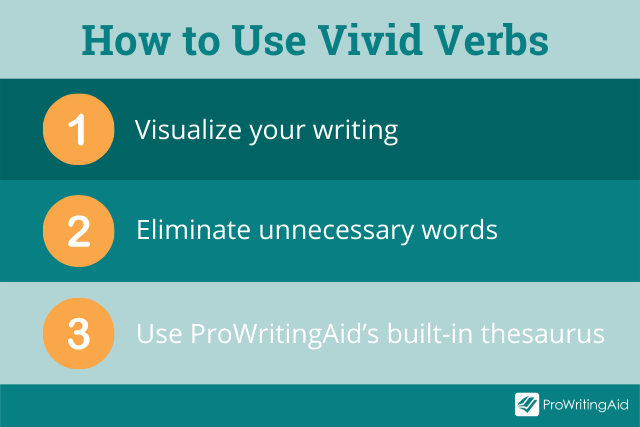
You can also visualize your work when you’re editing. Simply read a scene you’re working on aloud, then close your eyes and visualize it.
Having a hard time seeing it? That might be because your verbs aren’t specific enough. For example, imagine this line:
- She threw the ball.
When you read and visualize that line, you probably see a simple throw, but nothing particularly distinct. That’s a tell-tale sign that you’re lacking vivid verbs. So, how about this?
- She hurled the ball.
Now imagine the character getting her full weight behind the ball and having it rocket into the distance. With such a clear image, that must be a better verb!
For many of us, we don’t categorize words into types (like verbs and adjectives) as we read them. If your writing feels a little flat, you may not realize that verbs are the culprit.
Another way to visualize your verbs is by highlighting them with ProWritingAid’s Thesaurus Report. This report highlights all of the verbs in your writing so you can see which ones might need improving.
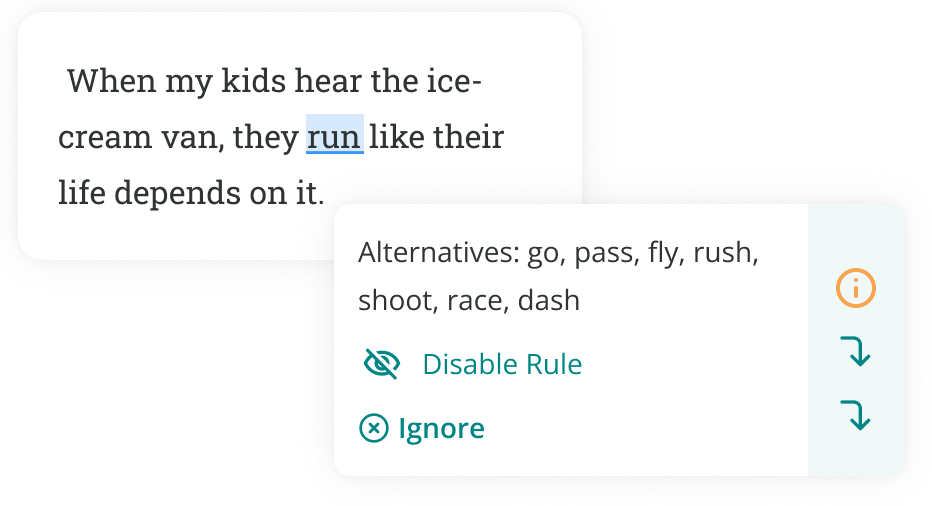
If you decide you need to swap out some of your words for more vivid verbs, you can find contextually relevant synonyms in the report.
Using ProWritingAid’s Thesaurus Report lets you see where all of the verbs are so you can edit and improve your verbs with ease.
Here are a few more examples of vivid verbs:
Weak: She looked at the book from the mysterious librarian, but saw nothing important.
Vivid: She scrutinized the book from the mysterious librarian, but saw nothing important.
Weak: He said he would never forgive me.
Vivid: He whispered he would never forgive me.
Weak: The soprano sang the solo with all her heart.
Vivid: The soprano belted the solo with all her heart.
Full A–Z List of Vivid Verbs
If you need some ideas for vivid verbs, check out our list of 50 powerful verbs to use in your writing.
- Attack
- Assert
- Bash
- Bolt
- Chortle
- Clutch
- Collide
- Devastate
- Devour
- Drag
- Elucidate
- Ensnare
- Eradicate
- Fling
- Forge
- Glare
- Grasp
- Grope
- Hover
- Hush
- Illuminate
- Interject
- Jostle
- Knead
- Knuckle
- Lash
- Lurk
- Meander
- Mosey
- Munch
- Nag
- Obtain
- Peck
- Plunge
- Prickle
- Quaff
- Quake
- Recoil
- Rush
- Saunter
- Shimmer
- Slump
- Sparkle
- Toddle
- Trudge
- Unveil
- Usher
- Vindicate
- Wrest
- Zap
Vivid verbs make for great writing. Use your words to paint a picture by swapping out your weaker verbs for stronger ones.


